Link Roundup Link Building
The A to Z Guide
Link roundups is a fantastic link building strategy to utilize for so many different reasons. One of the biggest reasons is that you’re eliminating a ton of resistance.
With other link building strategies, you are continually trying to break through the noise and stand out to win a link.
With link roundups, you’re only dealing with websites that are actively looking to link to other sites on a daily, weekly, or monthly basis.

It’s a link builders dream if you know what you’re doing.
Don’t get me wrong, earning links from high authority sites is no easy task.
Just like any other link building strategy out there, you’re going to have to put in the work if you want to see results.
With the right guidance however; you will be a lean, mean, link building machine after mastering our link roundup process and adding it to your arsenal.
This guide is designed to take you from A to Z in my agencies exact link roundup process.
We’ll be going over the following…
Skip to whichever section you’d like for your convenience.
What are link roundups?
3 ways to generate limitless content ideas for link roundup opportunities.
Vetting your link roundup opportunities.
How to find link roundup opportunities with advanced search engine operators.
How to find link roundup opportunities with tools.
How to find link roundup opportunities with twitter.
How to find link roundup opportunities with Facebook and LinkedIn
How to document link roundups properly and stay on track.
Link roundup outreach preparation to set yourself up for success.
Effective link roundup outreach strategies to skyrocket your results.
Conclusion.
Let’s dive right into it.
What Are Link Roundups?
Link roundups occur when other websites link out to content they deem the “best of” week, month, or year.
These sites are actively linking to other sites on a predictable and consistent schedule according to the structure of their link roundup.
By approaching websites that are actively engaging in this type of content creation, you can greatly increase your chances of winning links.
By focusing your outreach efforts towards websites you KNOW will link out to other sites on the first of the week, month, etc.; you can achieve your link building goals faster, easier, and with less resistance.

Here are the type of pages you can build these types of links to.
Content pages including blogs, case studies, guides, videos, & educational articles.
What makes link roundups such a great link building opportunity?
- You’re not spamming these people.
- You have a reason why your reaching out to them.
- You’re providing value to these people by making their job of finding “best of content easier.
This strategy is not to be used for every time you create content (if you do so regularly.
Only reach out to people with this method periodically and with your best pieces of content.
Pro Tip: If you create and promote content regularly, use your content that has the most social shares and comments for your link roundup outreach efforts. This way you’ll ensure that you’re not promoting garbage content to these people.
The last thing you want to do is bombard these people with horrible content.
- They will get sick of your inclusion requests.
- They will start remembering you.
- They will stop opening your outreach emails.
- Do not burn bridges with these people.
Once they label you as an amateur blogger, you’ve destroyed a perfectly good opportunity that could have provided exposure and link building opportunities for years down the road.
The rest of the information in this guide will reveal our step by step process we use to effectively target link roundup opportunities.
Moving forward, keep these 3 factors in mind to be successful.
- You need to know what type of content to produce.
- You need to know how to find these opportunities quickly.
- You need to know how to effectively get in touch with these webmasters with the right message.
Get these 3 factors right, and you will soar.
Now let’s dive into one of the most important phases of your link roundup campaign. Content creation for link roundups.
3 ways to generate limitless content ideas for link roundup opportunities.
Your level of success first depends entirely on your content.
You drop the ball on creating a spectacular piece of content, and it will affect every other phase of your link roundup outreach campaign.
The internet has become completed saturated with information.
Almost all topics imaginable in any niche has already been covered from top to bottom.
Because of this, not only does your content need to be unique, it has to be GOOD.

Here’s the first of 3 strategies to help you think outside the box and create killer content that will be well received in your niche.
1. Make a list of sub niches to broaden your link opportunities.
Let’s say we’re doing a link roundup campaign for an SEO site.
If I just limit my choices to well-known Search Engine Optimization topics, (IE on-page optimization, etc…), I’m leaving a TON of opportunities on the table.

You need to think about broader topics that are related to SEO.
- Content marketing.
- Technical SEO.
- Link outreach.
- User Experience (UX)
- Keyword Research
- Competitor Analysis
- Etc.
Let’s take user experience (UX) as an example.
You could write an article explaining how utilizing proven copywriting strategies in your content will help user experience.
You could back it up by proving that it will reduce your bounce rate, increase social engagement, increase average time spent on site, increase brand queries in the future, and improve your click through rate (CTR) in the search engine results pages.
You could argue that these metrics will help improve your rankings, and therefore understanding good copywriting strategies is a must if you want an edge over your competition.
With our hypothetical “user experience” article, you can now look for link roundups centered around the following topics.
- SEO
- Copywriting
- Behavior Metrics / Analytics
- Conversion rate optimization (CRO)
- Etc.
As you can see, by focusing on broader topics that are still relevant to your niche, you can increase the number of link roundup topics to go after.
While this seems pretty straightforward, often times it takes a little digging to find topics related to these sub-niches.
If you’re experiencing writers block, here’s another tip to help expand your topics for link roundups.
2. Let Google do the work for you.
First download a browser plugin called Keywords Everywhere.
This will show you the search volume of the keywords you enter into Googles search bar.

This will also show you the search volume for the recommended keywords Google lists at the bottom of the page
Type in a sub topic for your niche into Google. IE: Content Marketing.
Scroll to the very bottom to find keyword recommendations that Google lists.

As you can see, I easily found some content marketing topics that people are actively searching for.
- Content Marketing Examples
- Content Marketing Strategy
- How to Do Content Marketing
- Types of Content Marketing
This is the easiest way to generate ideas for content creation, and another great way to expand your reach.
Thinking up content ideas is not enough though. You need to focus on sub topics that are actively getting a reasonable search volume.
By finding hidden yet popular topics to cover, you can increase your chances of creating content people will like, appreciate, and want to link out to.
There’s one more tip worth mentioning when developing your content for your link roundup campaign.
3. Use BuzzSumo
This is one of my favorite tools kept in my arsenal, and I use it every day.
Buzz Sumo enables you to type in a keyword, and it will show you the most popular content most related to that keyword based on social shares.
There are many features you can use BuzzSumo for and I recommend you take a closer look.
When using Buzz Sumo to create great content ideas for link roundups, the goal is to determine what made the popular content perform well.
You’ll find that some content performed well just because it was promoted aggressively.
Other times you can find patterns and similarities between the top performing content.
By finding these similarities, you can pinpoint exactly what helped the content resonate with the sites audience and attract more attention.
Ask the following questions (or similar) when researching content ideas.
- What common questions are the top performing pieces of content addressing?
- Is there a common theme between the top performing content?
- How is the top performing content similar and how can you make it even better?
- What type of content is performing the best. Listicles? Infographics? Articles?
- Is it data driven backed by cited sources?
This is a great way to gauge what type of content performs best for your topic. At the very least, you can generate some ideas and add your own twist to it.
Using Buzz Sumo is very simple.
Go to BuzzSumo.com
Type in the keyword you found at the bottom of Googles results page from the previous tip.
Hit enter and sort through the results page you’re taken to. On the right-hand side of the screen, you can see exactly how popular it was on numerous social media sites.
It’s THAT simple.
Now that you’ve created a great piece of content, it’s time to get familiar with the problems you’ll face before beginning your search for link roundup opportunities.
The last thing you want to do is waste time documenting and reaching out to misleading “opportunities”.
Vetting your link roundup opportunities.

There’s a very small checklist you need to use when vetting your roundup opportunities.
You can go through this checklist easily as you’re actively searching for them.
1. Make sure each link roundup you find is recent.
This step is as simple as checking the date of the most recent roundup post.
Time is money, and you can’t afford to document and reach out to websites that don’t care about your post because they no longer do link roundups.
While I’d still encourage you to do a quick manual check, an easy way to filter a lot of old and outdated results is with Google “search tools”.
Simply go to Google and click “Tools” at the bottom right of the search bar.
Then click the “Any Time” drop down icon and select “Past Month”.
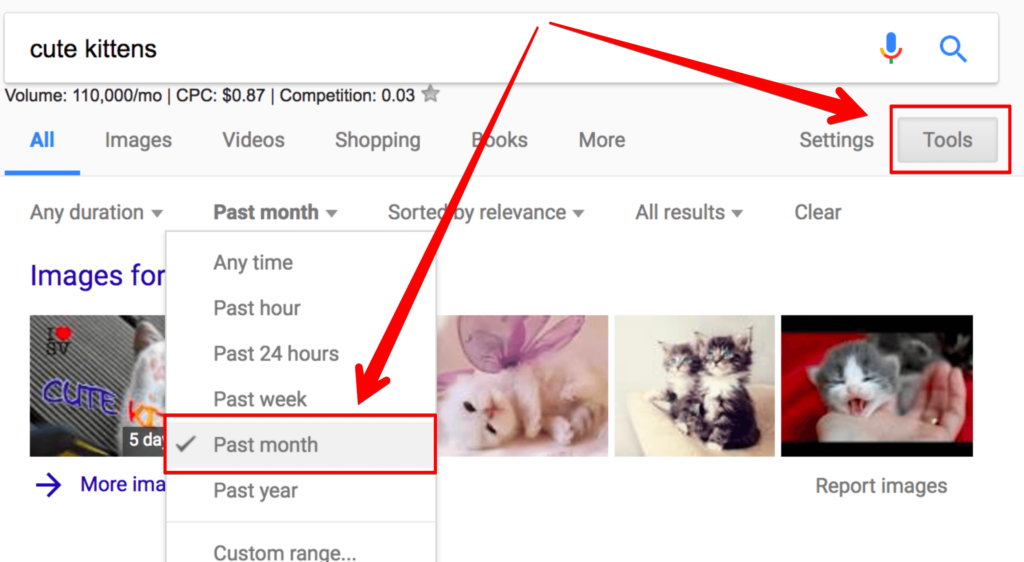
It’s important to ensure that any website you find from your results are recent and actively participating in this type of content.
I cannot stress this enough!
2. Avoid sites using “nofollow” links.
Nofollow links are formatted in such a way that they’re telling Google NOT to crawl through to the destination URL.
So if you get a nofollow link pointing to your site, it’s as if it doesn’t even exist in Googles eyes.
In other words, it’s a waste of time, energy, and resources trying to earn a nofollow link for your website.
Here’s how you can avoid pitching the “nofollowers” of the world.
Download this free browser plugin.
This browser plugin will automatically reveal in real time which links are nofollow as you’re browsing the web.

If you come across a website that consistently nofollows links within their link roundups, DO NOT waste your time with them.
While it’s great to be able to just write content, and automatically be featured in a post; the average person cannot afford to leave that to chance.
You need to spend more time promoting your content than you do creating it. SEO is a dog eat dog world, and you need to crawl your way to the top one link at a time.
While documenting and pitching one or two websites that will most assuredly nofollow your link won’t put a damper on your time, they do add up.
So be smart and brutal with your time.. Don’t pitch the nofollowers of the world.
3. Check for internal links
Sometimes you’ll come across a site that looks perfect.. Great authority, lots of links, and the roundup posts are plentiful.
Only to realize all the roundups are linking to inner pages on the site.
It’s like they took something beautiful that’s naturally occurring on the web, and morphed it into their own self-promoting monster disguised as an opportunity.
Don’t waste your time documenting these opportunities or pitching these people as well.
There’s plenty of fish in the sea.
Now that you know what to look for, let’s start looking for link roundup opportunities. In the next phase, I’ll be covering 3 different tactics to help you find them fast.
How to find Link Roundups with advanced search engine operators.
So what the heck are advanced search engine operators?
Advanced search engine operators are queries you can type into Googles search bar to narrow down specific results in Google.

You can use search engine operators to find other websites that are actively engaging in link roundups, among many other types of link building tactics.
Step 1: Keyword Research
Before I just give you the list of search engine operators we use to find link roundups, you need to understand the importance of combining the correct keywords with these search operators.
This is important, because you don’t want to generate a huge list of irrelevant link roundup opportunities that have absolutely NOTHING to do with your sites content.
Let’s say you write an article about content marketing and want it featured on sites that cover topics similar to content marketing.
Just like the previous topic research we did for the content creation stage, go type in the keyword “Content Marketing” into Google.
Scroll to the bottom and take note of the related searches Google finds for you.
Step 2: Document your keywords
Once you find keywords similar to “content marketing”, you’ll need to document them in a spreadsheet.
I use a personalized Google spreadsheet you can use at your convenience. It’s the exact same sheet that my team and I use when doing SEO for our clients.
We call it “Schumacher Sheets”, & you can access it here.
It’s basically a way for myself and everyone else on the team to stay organized every step of the link building process.
There are some other features beyond the scope of this step, but let’s not get ahead of ourselves.
I can cover more of that in the documentation phase.
You won’t have edit access, so it’s important to make a copy of it in your own Google drive.
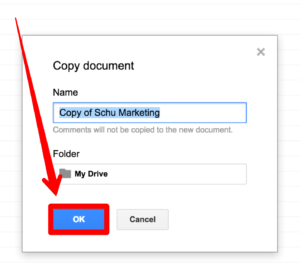
Now at the bottom of your screen, select the tab titled “URL Goals”.

In column A, simply type in the full URL of your content.
In column B, document your keyword research.
That’s all there is to it! This takes me about 90 seconds to accomplish.
Now that you’ve done some keyword research and documented it, it’s time to find some link roundups!
Pro Tip: Let’s say for content marketing, one of the keywords you found was “types of content marketing”. After you have documented all the keywords that google recommends for content marketing, do the same thing for “types of content marketing” as well. By doing a little digging, you can broaden your research capabilities with advanced search engine operators. One thing to note, it is so important that you stay on topic while doing this.
Step 3: Prepare your search engine operators
I’ll give you access to my teams link roundup operators sheet. It’s called “Schumacher Operators” & you can access it here.
Make a copy of it the same as before so you can have your own edit access.
It’s real simple to use.
Just type in the keyword as specified in column A, and it will combine this keyword with search operators. This will automatically help prepare the queries you’ll need to use when searching.
Now that you know what to look for, let’s start looking for link roundup opportunities. In the next phase, I’ll be covering 3 different tactics to help you find them fast.
Step 4: Commence the link roundup research phase.
Copy and paste each of the advanced search operator combinations into Googles search bar.
- Check for link roundup opportunities through page 10.
- Check on Bing through page 10
- Check on yahoo through page 10
- Rinse and repeat for each operator.
Document accordingly in your “Link Research” tab – (Skip to this section.)
I’m not going to sugar coat it. This is a time consuming & soul sucking process.
With that said, utilizing advanced search engine operators to find link building opportunities is still one of the tried and true processes that all the experts use.
So if you’re ok with being mediocre and allowing your competition to stay up top in the search engines, by all means try and find an easy way out.
Chances are you’ll end up like the other 99% who tried to find shortcuts, only to realize that nothing is handed to you.
SEO can be cutthroat. So if you want to succeed, you need to get your hands dirty.
…AAAAANYWAYS! Before I hand out the cool aid, I just want to say that SEO roundup opportunities are not all about doom and gloom.
There are some pretty cool tricks to help simplify the process and give you an edge over your competition.
Let’s dive into one of my favorite ways to find link roundup seo opportunities. The use of SEO tools.
How to find link roundups with tools.
Before I get into the step by step process, I wanted to outline the general strategy first so you understand the mechanics behind it all.
The idea is to find content related to your topic that has a lot of engagement, links, shares, etc.
Once you identify this content, you need to “reverse engineer” this contents backlink profile so that you can identify sites that include this “popular” content in their seo roundup.
This can help save a lot of time and also help you identify hidden seo roundup opportunities.

Step 1: Find relevant & popular content with Buzzsumo
While Buzzsumo gives you some free search credits every day, I highly recommend you pick up the paid version. I have no affiliation, I just want to show you our EXACT process.
If you’re on a budget, save money elsewhere and pick up the tools you need.
Content promotion will carry the day 95% of the time.
Go to buzzsumo.com
Type in one of your keywords you documented in your spreadsheet.
Identify the content that gets the highest amount of links.

Go to your Schumacher Sheets, and click on the “Base domains” tab at the bottom.

Simply start documenting the list of these URLs you find in the “base domains” tab.
(The Base Domains tab is different from the standard “Link Research” documentation tab I’ll cover further down in this guide. I believe it’s important to separate the 2 tabs so you won’t get confused and overwhelmed when finding opportunities with the help from tools.)
Step 2: Find relevant & popular content with Ahrefs Content Explorer tool.
Ahrefs is an incredible tool to use if you’re at all interested in promoting your content and building links for SEO.
If you don’t have it, GET IT.
It’s simply the most accurate and in depth backlink analyzer on the market. “No big deal, right?”
We’re not affiliated with Ahrefs in any way. Again, I just want to break down my team and I’s exact process we use for our sites and our clients sites.
So first step is to login to Ahrefs.

Click on the “content marketing” tab at the top.
Type in the same keyword you used to search in BuzzSumo.
Click the “sorted by relevance” tab, and select “sorted by Referring Domains”.
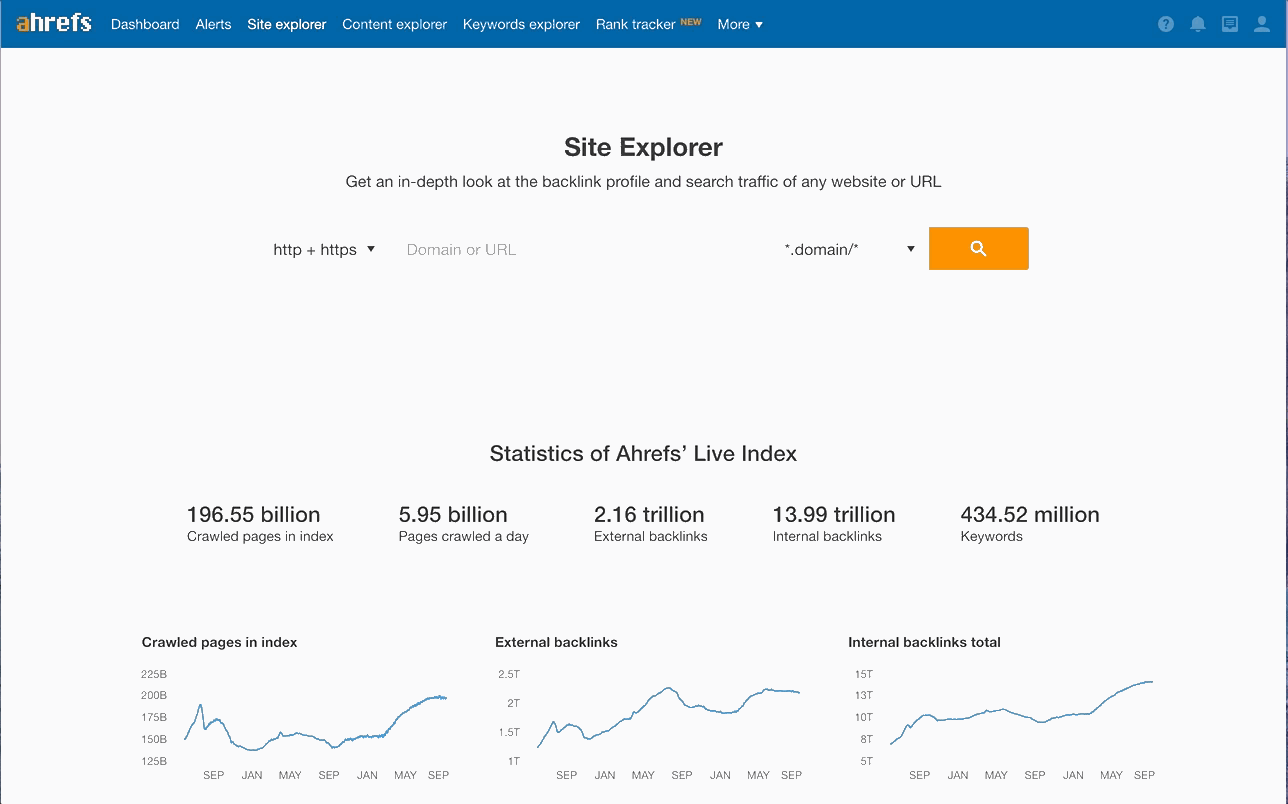
This will sort your results showing pages with the highest amount of referring domains.
Visit each of the top pages and make sure they’re actually related to your topic.
The next step is to document each page URL in your “Base Domains” tab within Schumacher Sheets.
Step 3: Authority Sites
You can also go to large websites that are considered the authority sites in your niche.
Look for the content that has a large amount of comments and likes/shares.
TIP: It’s best to focus looking for content that has been around for a month or more. This will ensure that the popular content has had enough time to attract attention.
Document these page URLs in your “Base Domains” tab.
Step 4: Reverse engineer | Find which sites include this content in roundups with Ahrefs.
Copy each page url you documented in your “Base Domains” tab, and paste it into the “Site Explorer” section in Ahrefs. Then click on the “Backlinks” tab found on the left hand side.

Scan through the results looking for “link roundup” type titles. You can find them in the title of the results Ahrefs show, or the url of the results they show.
Just type in words like “roundup”, “best”, “Monday”, “link”, etc. in the search bar to sort through these results faster.

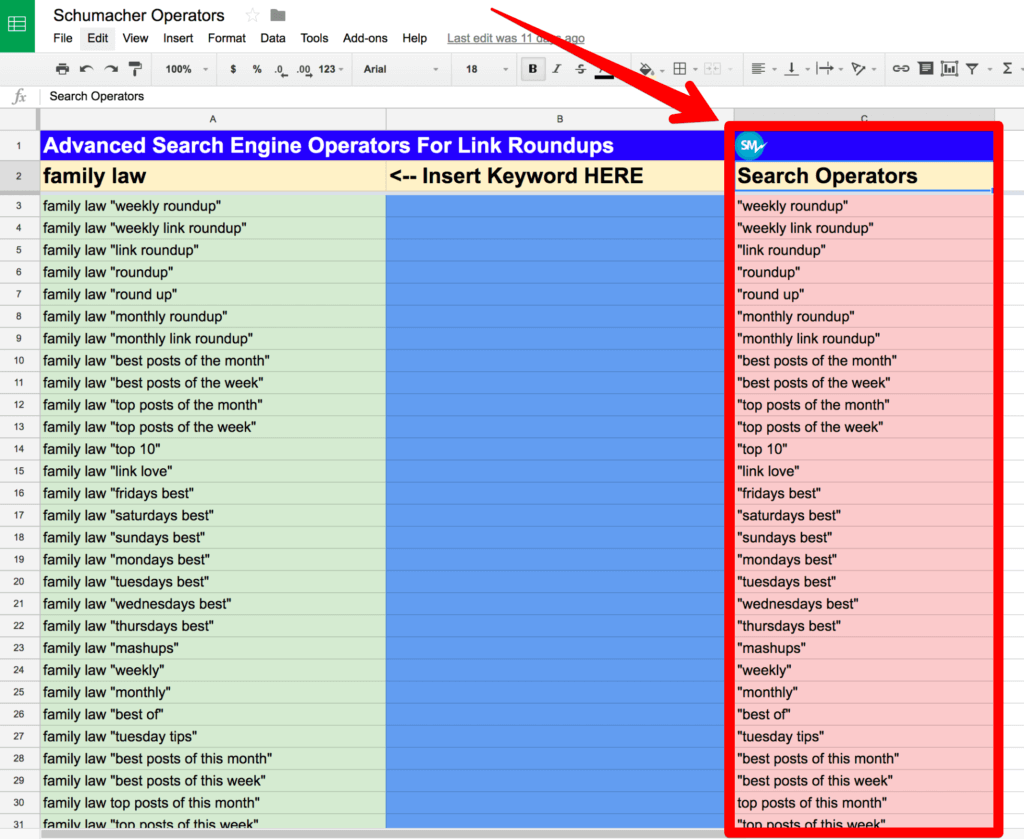
Pro Tip: The best way I found is to pick crucial words used in your link roundup advanced search engine operators listed in your Schumacher Operators sheet. Don’t use multiple words, just use one main word that is recurring in the the search operators section. Ex: Roundup, Best, Up, Link, Top, Tip, Daily, Favorite, Etc.
Using tools is a great way to find SEO roundup opportunities.
Sometimes the best way to get work done is by piggy backing off the hard work from others in your industry.
There’s no shame in working smart.
Speaking of working smart, you can utilize social media to discover roundups that otherwise might not have been found.
How to find link roundups with twitter.
I personally stay away from twitter as it’s not the greatest for client acquisition in b2b.
With that said, you’re leaving a TON of expert roundup opportunities on the table if you don’t utilize Twitter.
Whether you like it or hate it, twitter is here to stay.

Here’s how you can quickly find link roundup posts FAST with twitter search.
Step 1: Open up twitter.com on your desktop.
Step 2: In the search bar found in the top right section of your screen, use the same advanced search operators found in Schumacher Operators.

Step 3: Go down the list, click on tweets if they have ANYTHING to do with roundups.
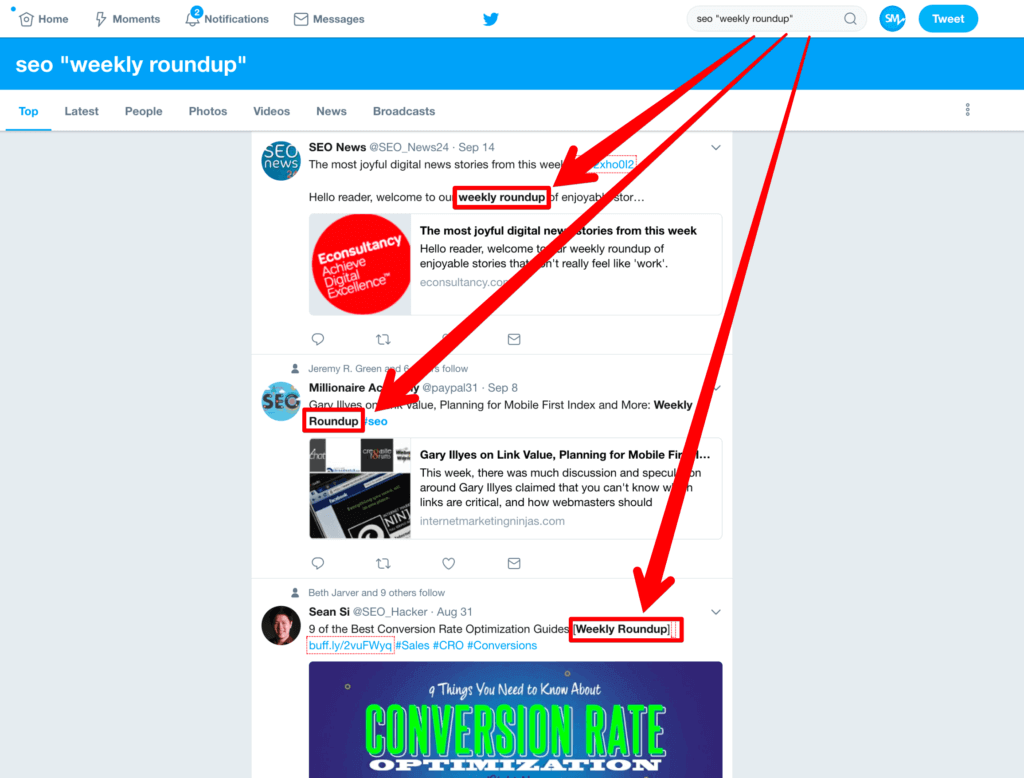
Step 4: Go through the standard checklist to make sure there are no internal links, nofollow links, etc.
Step 5: Document these opportunities in your link research tab found in Schumacher Sheets.
Step 6: Rinse and repeat
It’s that simple, you do not need to complicate this.
Just stay focused and you can cover a lot of ground.
You can also use “command F” on mac or “ctrl F” on a PC to highlight keywords so you can sort through your twitter results faster.
I can usually find a handful of link roundups in a matter of minutes.
I truly believe Twitter is the best social media platform to find these types of posts.
With that said, Facebook and LinkedIn are nipping at their heels in this regard.
How to find link roundup opportunities with Facebook & LinkedIn.
Naturally when you’ve been showcased in a link roundup, you’re going to want to brag about it on social media.
Also, if you hold a weekly link roundup; you’re going to want to showcase it.
I found that Facebook and LinkedIn can offer an incredible way to find these link building opportunities fast.

Facebook is pretty straightforward.
Simply type in your advanced search operators within Facebooks search bar found at the top, and you’re good to go!
LinkedIn is one step trickier than Facebook.
When you search for link roundup posts in the search bar, be sure to click the “Content” tab that appears at the top of your results.

Otherwise, you’ll just be given a list of people LinkedIn suggests you connect with.
Document every opportunity you find in your “link research” tab found in Schumacher Sheets.
It’s THAT simple.
I don’t care who you are, what you think your limitations are; social media platforms like Twitter, Facebook, and LinkedIn have put the world at your fingertips.
Even if you only write a fairly decent piece of content, and get it in front of these people you find, you WILL build links.
However, you won’t build links at scale until you get the last 2 pieces of the puzzle right.
Drop the ball on documentation and outreach, and you might as well go home.
If you want to learn our exact documentation and outreach process, continue reading.
How to document link roundups properly
Staying organized is the number 1 most important thing you can do for your link building activities.
Whether you’re working solo, or you have a team helping you; knowing exactly what link roundup has been found and what’s been accomplished in the outreach phase is crucial to moving fast and being successful in your endeavors.
I use Google Sheets to keep track of all our link building activities. While this is not a new concept, I put my own tweaks in it to make my tracking a little more sophisticated.

Make a copy so you can have edit access if you haven’t already done so for Schumacher Sheets found here.
The main changes I personalized my sheets for is to help me track the efficiency of my link building strategies.
I want to compare for EACH link building strategy the following…
- The amount of link opportunities found.
- The amount of link opportunities pitched.
- The amount of links I’ve earned.
- The average domain rating (DR) of each link I’ve earned.
- The average time it takes for each link I’ve earned.
- The average success rate for each link I’ve earned. (Live links / # of opportunities found)
And last but not least…
I wanted an easy way to figure out which link building opportunity will get me the most results with the highest DR links, in the least amount of time and effort spent possible.
This WILL vary from industry to industry.
It’s based on the 80/20 rule founded by the famous Italian economist named Vilfredo Pareto.
Where 80% of your results will come from 20% of your efforts.
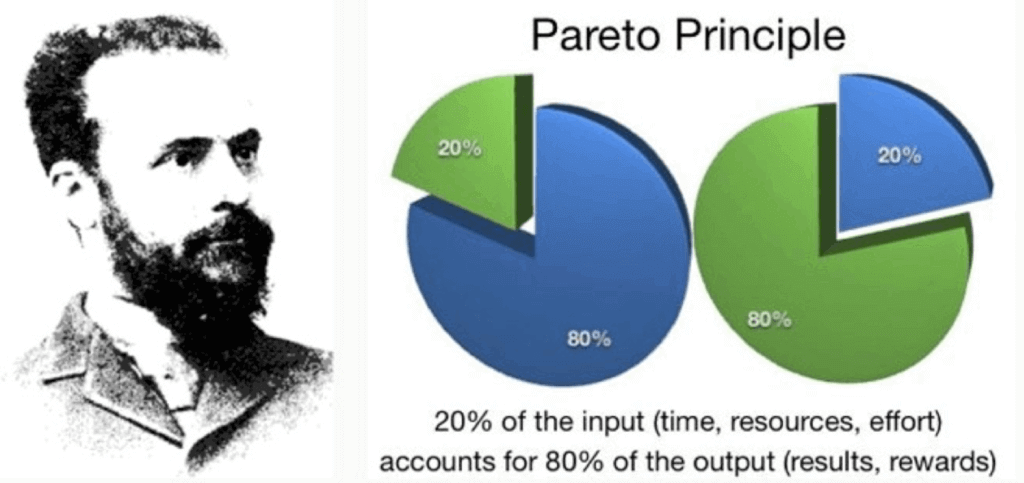
I know I’m getting ahead of myself because this is just a simple link roundup guide.
You need to understand the importance of tracking your efforts on a large scale.
With Schumacher Sheets, simply fill out the information in the “Link Research” tab, and it will automatically fill information in the “Data” tab and the “80/20” tab.
While this may not benefit you if you’re just doing one link building strategy, over time it will pay dividends to know where your time & efforts are best spent.
I can tell you from personal experience, from an SEO agency view, it has been phenomenal data to acquire.
Now that I have shamelessly spiraled off topic…
Let’s get right into it. Here’s the correct way to document your link roundup opportunities.
Step 1: Open up Schumacher Sheets and click on the “Link Research” tab found at the bottom of your screen.
Step 2: Fill in all the information as specified at the top of each column.
Step 3: You’re done!
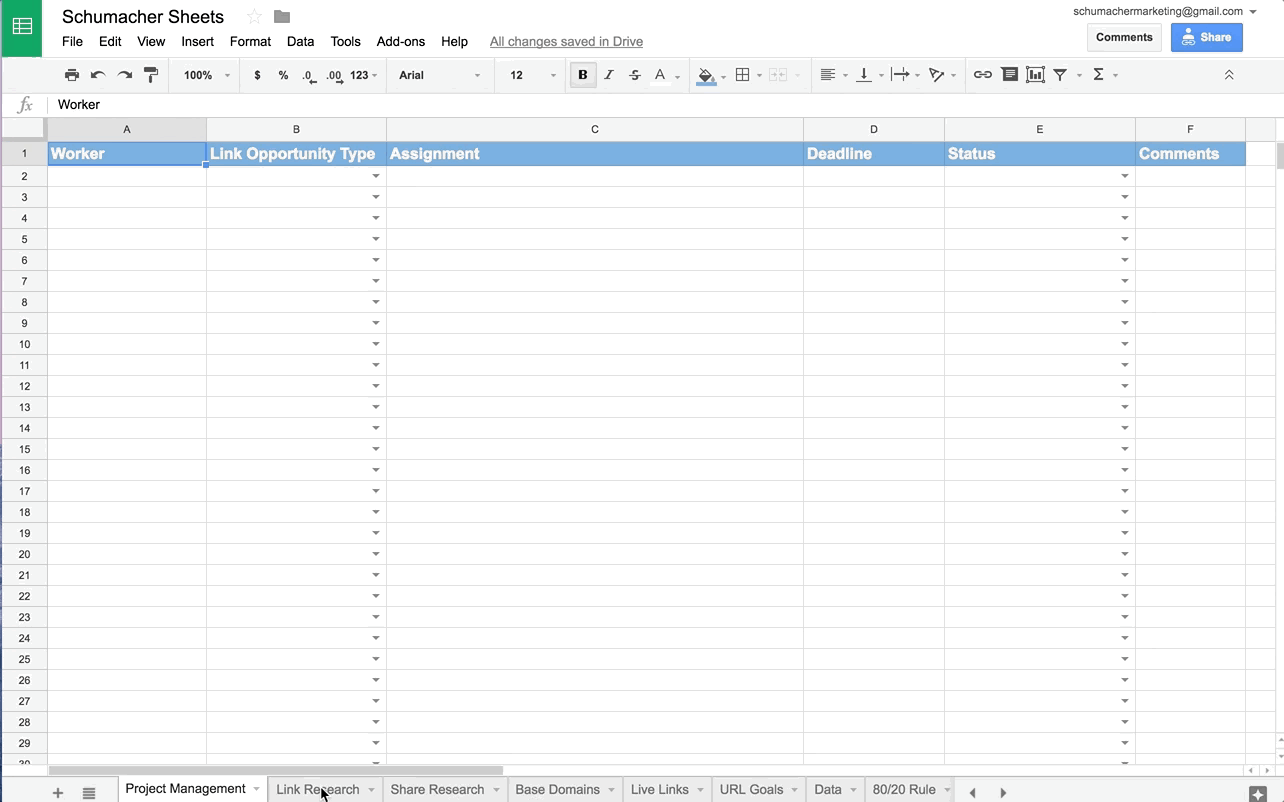
It’s not rocket science guys and gals..
You just need to take the time to fill in the information.
Let’s dive into what the particularly important columns entail and why it’s beneficial to track.
Column A : Status
If you’re working on a team, or doing it yourself; tracking the “status” is imperative for this whole documentation process to work.
I’m not going to spell it out for you. The bottom line is, researching link building opportunities can get overwhelming FAST.
You NEED to know…
- When you found an opportunity.
- When you prepped the opportunity for outreach.
- When you outreached them.
- When someone replied to your email.
- When you earn a link.
By tracking this information, you are eliminating the overwhelming state that deters most from tackling their SEO outreach.
Confusion and overwhelm is the biggest culprit for failed link outreach campaigns
Column B: Date
This is just as important as column A, as they’re both connected.
Here’s one of many scenarios why.
Let’s say you noticed that an opportunity was pitched more than 1 week ago, but you haven’t received a reply.
It’s important that you follow up with them one more time so as to not allow any hard earned opportunity that you found to fall through the cracks.
“Hey [First Name], I wanted to follow up one more time just in case my message got lost in the sea of emails.
[Insert original message here]”
You’ll be surprised how many people never saw your email the first time, or meant to get back to you and got side tracked by that thing we call life.
Column F: Contact Info
You could have 1,000 link roundup opportunities, but if you don’t know how to get in touch with these people, you’re dead in the water.
While this could be a whole new piece of content, I really want to simplify it for you in just a few brief steps.
Paid methods : Use findthat.email to simplify this process. Considering how much money there is to earn by ranking at the top of Google, the pricing is really fair and the service is second to none.
Hunter.io is another great service. You can even download a browser plugin to really boost your productivity.
PSSST! Findthat.email has 50 free search credits per month & Hunter.io has 100 free search credits per month as of writing this content.
Personally, if you’re looking to build links at scale, I would highly recommend you utilize services like the 2 I mentioned above.
If you’re a big cheapo (I’ve been guilty of this!), here are some ways to find the contact information for free.
1. Look at the “Contact” page on the site.
2. Find the author of your link roundup opportunities, and search for them in Facebook, Twitter, and LinkedIn. (Worst case scenario, you can contact them through social media.)
3. Click the “Email Combo” tab in Schumacher Sheets. Plug in the Link Roundup authors first name, last name, and domain name. Copy the combinations that automatically appear in column A.

Download “Rapportive”, sign into Gmail, and paste the possible combinations into the “To” field.
Hover over each box until you find a picture on the right hand side that shows up. 9 out of 10 times, they regularly check this email.
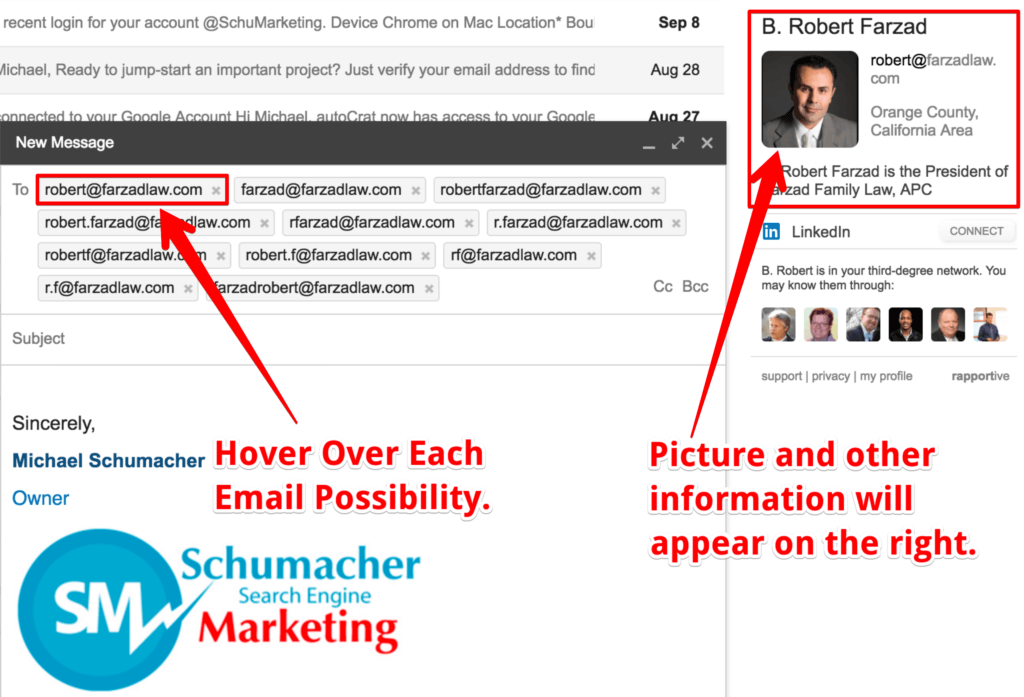
Column G: First Name
This is simply to boost your conversions with the outreach phase. If you could increase replies by even 5%, you would be stupid not to take advantage of this.
Column N: Goal Page URL
If you’re working on multiple pieces of content, documenting the goal page is crucial.
Now I personally recommend you fill out every column, as each column is very important to your success.
With that said, you can just focus on these columns I mentioned above and you’ll do just fine.
Now that you’ve successfully documented your link roundup opportunities, it’s time to put it all together.
There’s only 2 steps left in our process, and they are arguably the most important.
In order for you to stand out among the noise, you need to prep your outreach phase.
Let’s dive into the prepping stage for our outreach campaign, and really set ourselves up to stand out amongst the crowd.
Link Roundup Outreach Preparation
Outreach is one of the most important steps in your process.
So if you don’t treat it as such, you are leaving some serious results on the table.
That’s why you need to focus on prepping your outreach phase so that you can get the most out of every step in the process.
If you find 1,000 opportunities, why on earth would you use a standard template to only get 100 links when you COULD get 150-200 with just 1 extra step.

Don’t get me wrong, I understand the value of moving fast.
In order to build links at scale, you need to effectively outreach these people quickly.
The big misconception however, is your inability to move fast if you take the time to add a little personalization to your messages.
I’m happy to say I’ve developed a process that eliminates as much of the added time possible.
This process will enable you to quickly personalize and outreach your list of link roundup opportunities.
I’ve found that the added benefits of personalizing your outreach campaigns far outweigh the little time it takes to personalize your messages.
I can’t stress enough how important it is that your email doesn’t look, sound, or feel like a template.
You need these people to think you are personally writing out an email JUST FOR THEM.
After all, I’m sure you can imagine just how many times these websites that do link roundups get contacted.

You NEED to stand out or you will get lost in the noise and lose some amazing links.
Without further ado, let’s dive into our outreach prep process.
Step 1: While your Schumacher Sheets is open, press the 4 lined icon found at the bottom. Find and select the “Link Roundup Advanced” tab.
There you will find a sheet that’s designed to help quickly personalize an outreach message for each link roundup opportunity.
If you documented your research from our previous step properly, the only columns you need to take the time to fill out are columns C.
- Column A will be their email address which you’ve already found.
- Column B will be their name which you’ve already found.
- Column D will be a standard description about what YOUR article is about.
- Column E will be YOUR articles URL
- Column F will be one of two things. A unique takeaway that your content covers, OR social proof.
I used a “filter formula” to pull the necessary information from the link research tab for this type of opportunity. This way columns A, B, and E are already filled in.
Step 2: Take the time to write something unique for columns D, and F that you can use for every single message. Write something for each of those columns once, and then simply fill in the remaining rows with the same exact sentences.
So that leaves you with column C.
“I thought your recent post about XXX was spot on. Say something insightful about that post / OR how it helped you.”
Step 3: Visit their website. Find a piece of content they recently created.
It MUST be a piece of content written by the person who regularly posts these link roundups on the site.
The purpose of column C is to stroke their ego and get them interested in what you have to say.
There’s no better way to do this than by complimenting the work they’ve done, and demonstrating your sincere interest by offering up your insightful comment about their work. Just don’t make it obvious and brown nose them. You must sound sincere or this will backfire.
Simply fill in the 2 areas I highlighted in red for each link roundup opportunity.
Ex: “I thought your recent post about SEO roundup strategies was spot on. I just implemented your personalization strategies and saw over 150% increase in replies for my outreach campaign.
Step 4: Go back to your “Link Research” tab, and under status in column A select “Outreach Ready” and date it in column B.
Step 5: Rinse and repeat until done.
NOTE: I wanted to dive a little further into Column F.
I gave 2 options, a unique takeaway OR social proof.
Obviously a unique takeaway would be a good option if you’re promoting a brand new piece of content.
If you want to take it a step further, first promote this content using the skyscraper method.
It’s real simple…

Take your content that you created, and find other content on the web that’s similar to yours that already has a lot of social shares and links.
Step 1: Go to buzzsumo.com to find this content.
Step 2: Then with the paid version of Buzzsumo, you can view and download all the twitter profiles that shared this popular piece of content.
You will also be given the websites that are associated with these twitter profiles.
Step 3: Find the emails associated with those websites.
Then reach out to all of them with a simple message as follows.
“Hi [First Name],
I know you’re busy so I’ll get right to the point.
I noticed you shared on twitter a piece of content titled [Insert title of content they shared].
I actually created content similar to this but added [XYZ] I feel it was lacking.
I’d really love your feedback. Could I send you the article?”
If they say yes, send them a simple message as follows.
“Great!
Here’s the article. [Insert content URL here]
You’re feedback is greatly appreciated. Also a simple share might not seem like a big deal to you, but it would mean the world to me!”
Don’t overthink it. Just do it.
So go promote your content with the skyscraper method and build those social shares!
Why is this important?
When you approach a website doing link roundups, you can brag about how awesome that content really is & you’ll have proof to back it up.
I promise you, your chances of standing out and earning a placement in their link roundup will jump significantly with social proof.
“I think it’s a pretty good article, but don’t take my word for it. It’s already gone viral and has been shared 250+ times on twitter.”
While this all might seem like a lot of work, you need to understand that the only real time intensive part of this prepping process is Column C and F.
If you want to play with the big boys and girls, you’re going to have to put in some work.
After all, your competitors are not relaxing and taking it easy.
Now that you’ve successfully prepped your outreach phase, you’re ready to START your outreach phase.
The beauty of this prep stage is that with the push of a few buttons, you can create these templated yet personalized emails automatically.
That’s right, you don’t need to spend the time copying and pasting all this information into a message, one message at a time.
With the use of Autocrat, you can generate personalized emails automatically for free.
The outreach phase is where the rubber meets the road.
You’re almost there, push through this last step and you’ll be in the top 1% of link roundup link builders.
Link Roundup Outreach

Before I get into the Autocrat outreach phase, I wanted to share some more simple templates if you don’t want to put in the prep work.
Title: Here’s an amazing post for your roundup.
Hey [Insert name],
Would you be open to featuring my [article/video/guide] in your link roundup post?
[Insert 1 sentence | SHORT description on what your article is about.]
[Example: It’s a complete guide for beginners on how to blog successfully in 2018 using the hottest plugins with WordPress (SEO plugins, designer plugins, CRO plugins, Analytic plugins, Website Speed plugins, etc)]
If you’re open to checking it out, you can view it here. [Insert Link]”
You could add something like this to the bottom of your message to boost your value to the webmaster.
“Let me know your thoughts. I’d be glad to send it out to my email list and social followers!”
Adding something unique and of value like the 2 sentences above can go a long way.
If you take your link building seriously, you’ve already prepped for outreach and you’re ready to go.
Here’s what the advanced “template” will look like.
Advanced roundup outreach:
“Hi [Insert name],
I thought your recent post about [XXX] was spot on. (XXX Say something SHORT that is insightful about that post / OR how it helped you. XXX)
I noticed you also do roundups, and I thought my piece of content would be a great candidate for inclusion.
[Insert short description on what your article is about.]
[Insert your articles URL]
[Unique & Valuable Take away OR Social Proof.]
Your advice and feedback is greatly appreciated. I’d love to hear your thoughts.
If you decide to include it in your roundup, it would make my year.
If you’re open to this, I’d be glad to send it out to my email list and social followers!”
If you have made it to this phase, all the hard work is already done.
Here’s the exact process my team and I use to generate personalized messages in mass with a click of a few buttons.
Step 1: Go to the “Advanced Link Roundup” tab found in Schumacher Sheets and make a copy of your autocrat document hyperlinked at the top.
Step 2: Download AutoCrat
Step 3: Set up Autocrat settings for your link roundup template, start autocrat, and you’re done!
Step 4: Go down one personalized message at a time and send out your emails!
It’s important to note that once you have installed AutoCrat, the work is done!
This works for any link building tactic, not just link roundup opportunities.
The fact is, when you have hundreds and sometimes thousands of websites to reach out to, personalizing messages to each and every one of them is just not feasible.
With AutoCrat, you can generate personalized emails with the click of a few buttons, FOR FREE.
This will minimize the time spent on otherwise tedious tasks (Automation)…
While maximizing your reply rate in your link roundup outreach campaign (Personalization).

This is how you truly scale up your outreach process.
Once you’ve created your email content, simply copy and paste this content and send out your emails.
In your “Link Research” tab; document that you’ve outreached these people, document when you’re negotiating with them, document when the link goes live.
Conclusion:
As you can see, building links with link roundups is not rocket science.
In fact, it’s easy for anyone to do if they just break down the process step by step.
The key is to not get overwhelmed.
Like any link building strategy out there, you need to focus on one step at a time.
Don’t look at the big picture, break down and focus on each task until it’s complete. Then move onto the next step.

If you focus on these simple steps, you will do just fine.
- Create great content people will want to include in their link roundup.
- Sort through the bad opportunities so you’re efficient with your outreach.
- Find link roundup opportunities with advanced search operators, tools, & social media.
- Document all the crucial information you’ll need for outreach and stay organized.
- Prepare your outreach campaign to set yourself up for success.
- Skyrocket your results by automating your outreach as much as possible to save money and time.
- Give yourself a high five, just not in public.
You do this, and you will end up getting the absolute most out of this strategy; while your competitors are still scratching their head wondering why they aren’t nearly as successful.
By approaching your link building with a step by step process, you’re able to focus your time and energy on the activities that matter.
This is the exact process my team and I use for link roundups. I hope you enjoyed my A to Z guide.
Are there any strategies or tips that I missed in our process that could make it better? I’d love hear your thoughts on how to improve link roundup link building productivity!












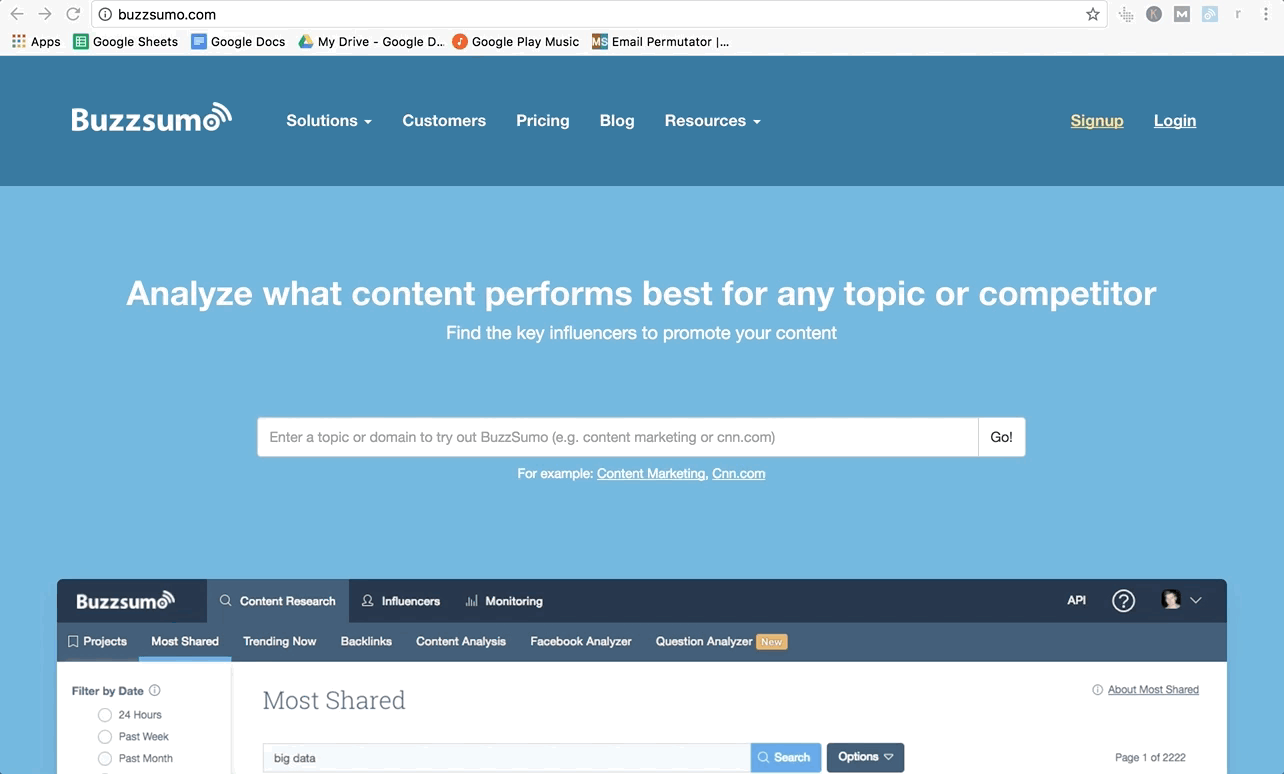

Share the love! I’d love to hear about more link roundup link building strategies in the comments below!